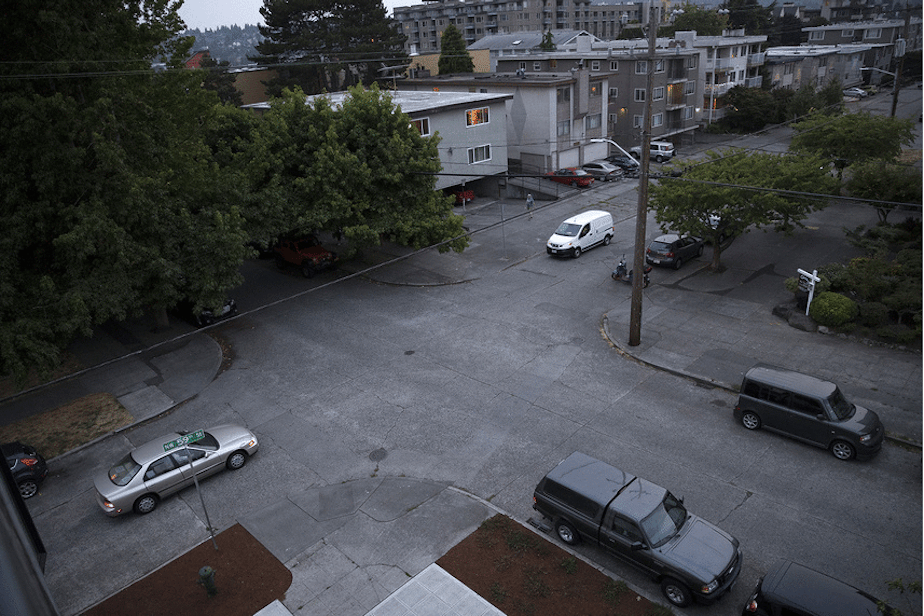Stop signs aren't all they're cracked up to be, Seattle

As traffic has worsened in the Seattle area, drivers have taken to side streets to beat the brake lights.
This prompted one of our most popular Local Wonder questions: Why doesn’t Seattle have more stop signs?
"I'm very curious about why we have so many unmarked intersections in Seattle," said Allen Prescott, who lives on a busy-ish street in Wallingford with no stop signs.
He said that’s fine for local drivers.
“They’ll slow, and they’ll look, and they’ll creep,” Prescott said. “But there are enough people who don’t live here and don’t understand unmarked intersections, who blow right through them. You can’t make the assumption that everyone understands how they work.”
Sponsored
There are rules for navigating unmarked intersections.
It's in the Washington drivers manual: “Right makes right. You look right and someone’s coming, they have the right of way. If there’s no one to the right, you have the right of way.”
Prescott didn’t know this until his ex-wife had an accident.
“She got a ticket for failure to yield because she did not have the right of way,” Prescott said.
That's one reason there are so few stop signs on neighborhood streets in Seattle.
Sponsored
Here’s another reason: A little uncertainty is good for safety.
Ben Peterson bikes with his daughter Camille to Whittier Elementary, where she has just started school. He also asked Local Wonder about stop signs.
“Nobody knows who to yield to,” he said.
Because even if you remember “right of way,” you can’t count on others to know the rule.
“Either you are very tentative as you ride through on a bike, or you try to take the initiative. But you’ve gotta watch out for cars or people walking,” Peterson said. “Yup, it’s tricky without stop signs. “
Sponsored
Dongho Chang of the Seattle Department of Transportation said most times, it’s best to have drivers on edge, so they slow to a crawl and drive defensively.
“Lower speeds, cautious behavior so you can avoid collisions,” Chang said. “That’s really the paradigm for safety in our city.”
Put another way, stop signs lower our guard. Unregulated intersections make us nervous. Nervous is good.
“We want everybody to pay attention when you’re driving on residential streets — and all streets,” Chang said.
It’s a civil engineering plot for our own good.
Sponsored
“Well, it’s not a plot,” Chang said. “Really, the way we have our communities laid out, it’s been very effective.”
Alison Moroni — who also asked about stop signs — called that magical thinking. She lives in Rainier Beach; her son will one day attend Emerson Elementary.
“It seems incomprehensible that there could be an elementary school and no stop sign anywhere,” Moroni said. She said people zone out when they drive.
“Seeing stop signs, we know what to do,” she said. “We see a stop sign, we brake.”
She continued: “A lot of people in the neighborhood know there’s no stop sign here, and they just blow through it.”
Sponsored
This is the third reason Seattle has few stop signs: Drivers blow through intersections, yes, but they will do so at a stop sign, particularly if they believe it’s not a necessary stop.
“That one time you're ignoring it really could have severe consequences,” Chang said.
Crash data show there are far more accidents at intersections in Seattle with stop signs than without.
Which brings us to traffic circles, an approach that reduces collisions by 97 percent.
They’re expensive, and they go in where crash data warrants.
So maybe the question isn’t why aren’t there more stop signs.
Maybe it’s why don’t we have more traffic circles?
Submit questions about our region in the form below. Your question could be investigated in a future KUOW story.
